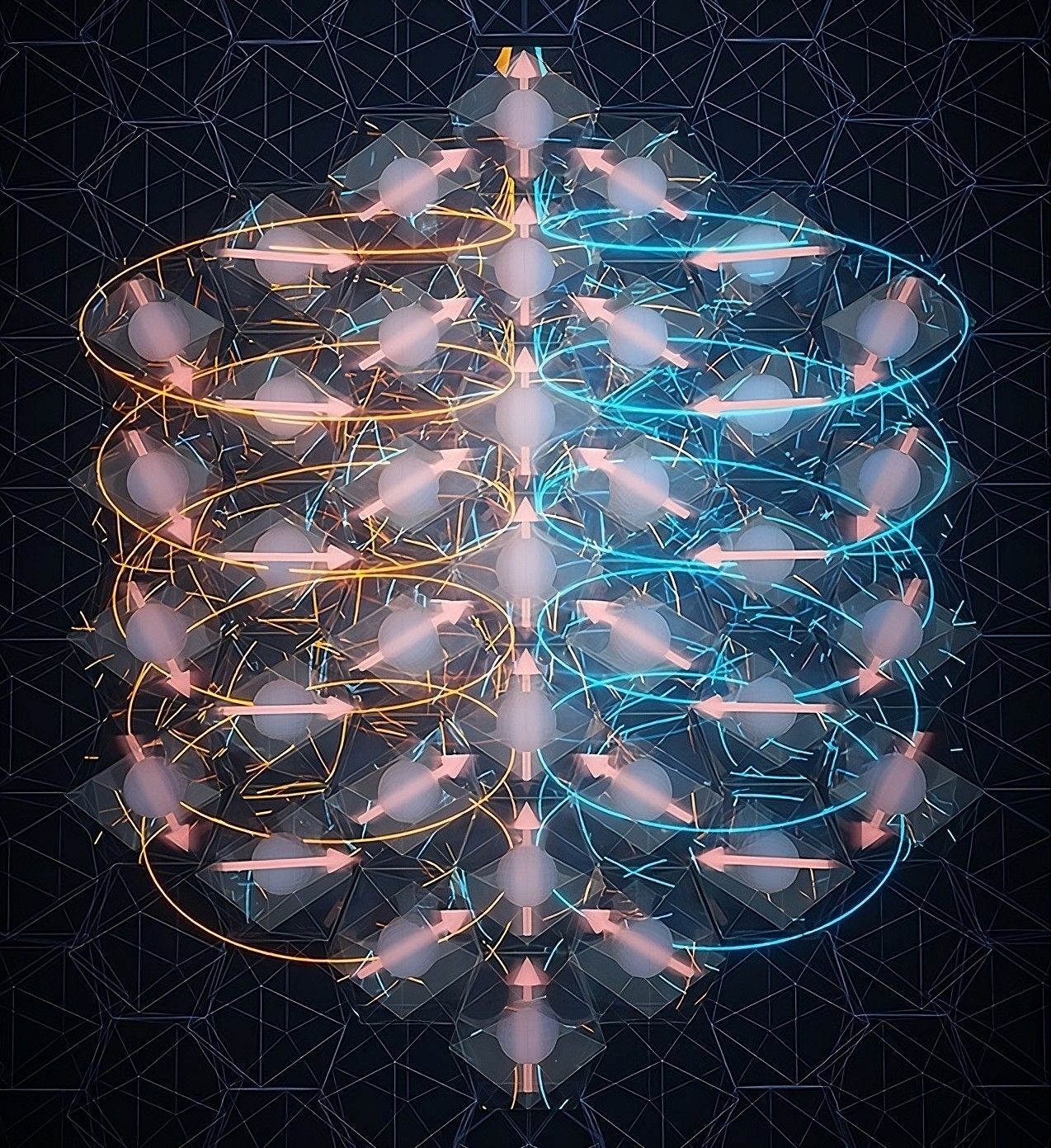Follow us on Google News (click on ☆)

When researchers irradiate a thin layer of nickel iodide with an ultrafast laser pulse, spiral-shaped phenomena called "chiral helimagnetic oscillations" appear. These phenomena could be useful for a range of applications, including fast and compact computer memories.
Image: Ella Maru Studio.
Conducted by researchers from the University of Texas at Austin and the Max Planck Institute, the study highlights the unique properties of nickel iodide, a multiferroic material. Ferroic materials are known for their specific atomic alignments, which give them electrical, magnetic, or elastic properties. Multiferroics exhibit several of these properties simultaneously, which can induce a magnetoelectric coupling phenomenon. This allows the manipulation of a material's magnetic properties via an electric field and vice versa, paving the way for major technological advancements.
The team, led by Frank Gao, discovered that NiI2 possesses particularly strong magnetoelectric coupling. This result was obtained by irradiating samples of this material with ultrafast laser pulses and then observing the resulting changes in electrical and magnetic orders. This discovery could transform the design of electronic devices by increasing their efficiency and reducing their size.
Emil Viñas Boström, co-author of the study, explains that two factors are essential to understanding the power of this coupling: on one hand, the spin-orbit coupling, which links the spin of electrons to their orbital motion around the iodide atoms; on the other hand, the specific magnetic arrangement of NiI2, known as a spin spiral or helix. These characteristics are crucial for establishing ferroelectric order and the strength of magnetoelectric coupling.
The potential applications of NiI2 are vast. Among them is magnetic memory for computers, which could become much faster and more energy-efficient thanks to this material. Furthermore, this coupling could enhance connections in quantum computers or be used in high-precision chemical sensors for the pharmaceutical industry.
Researchers hope that these findings will lead to the identification of other materials with similar properties and artificially strengthen the magnetoelectric coupling to maximize their potential.